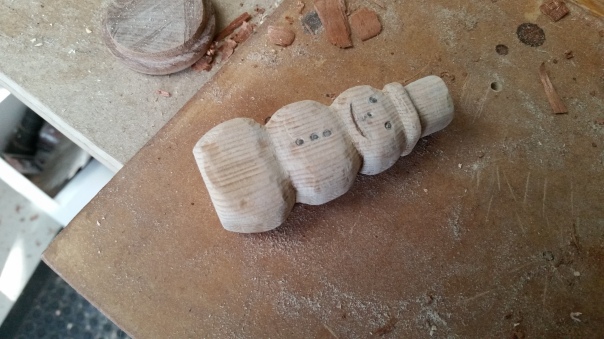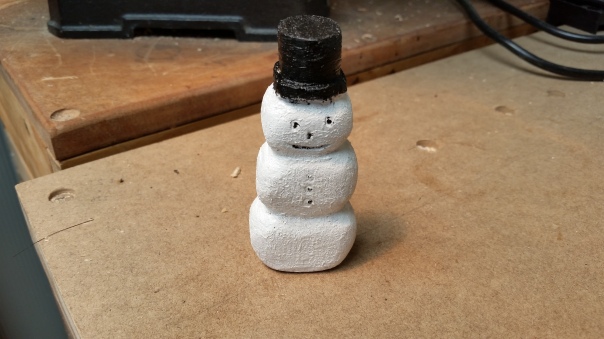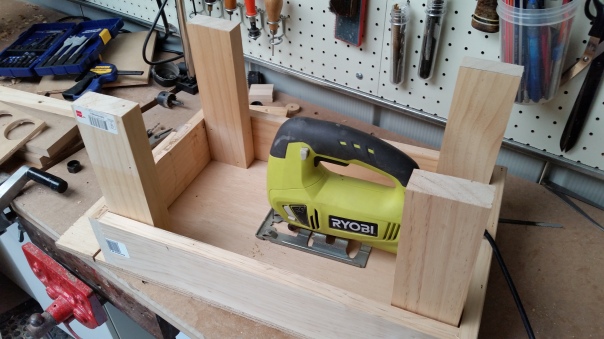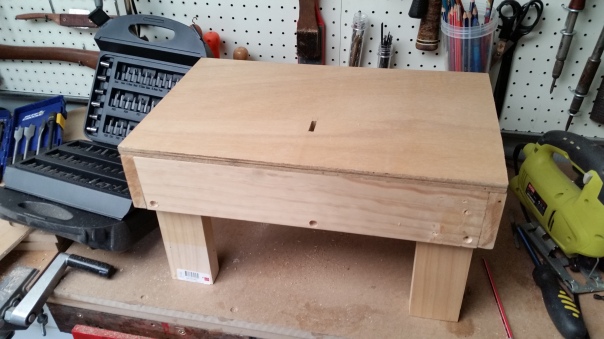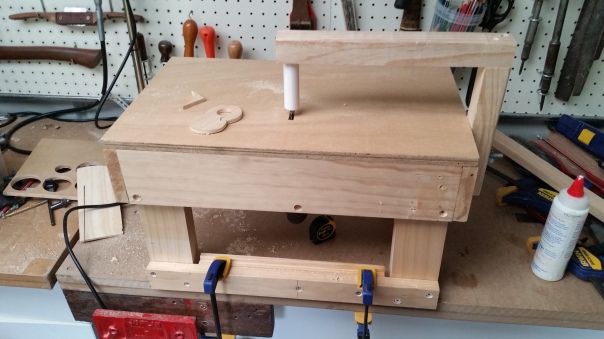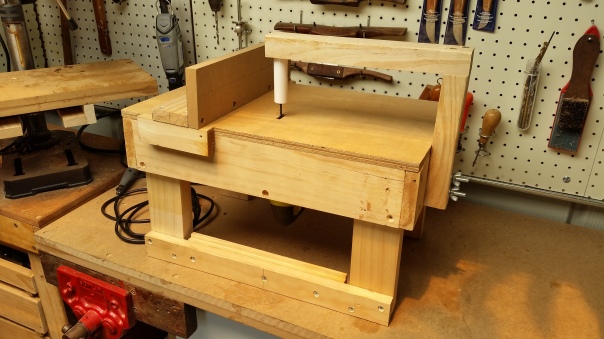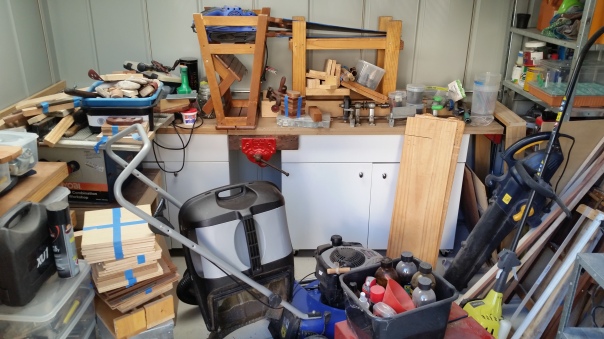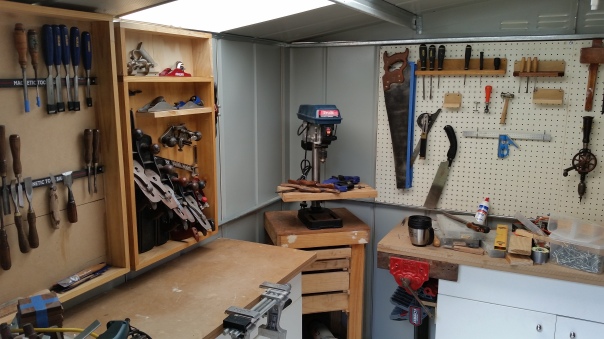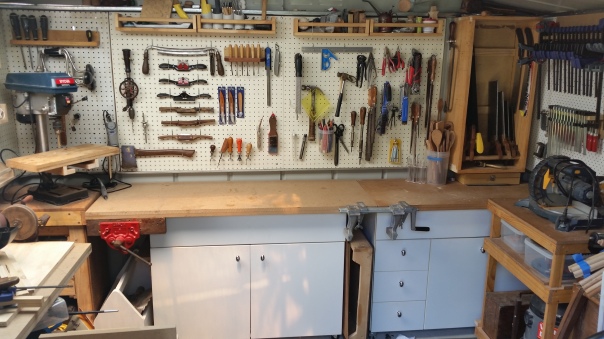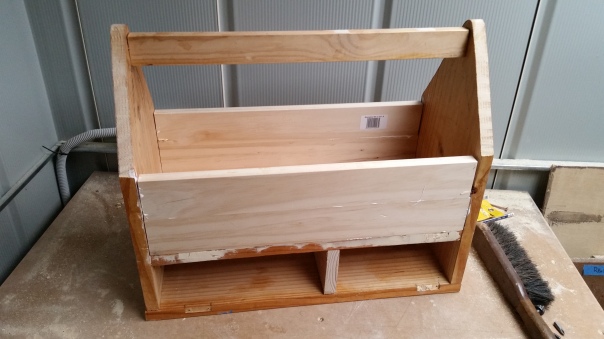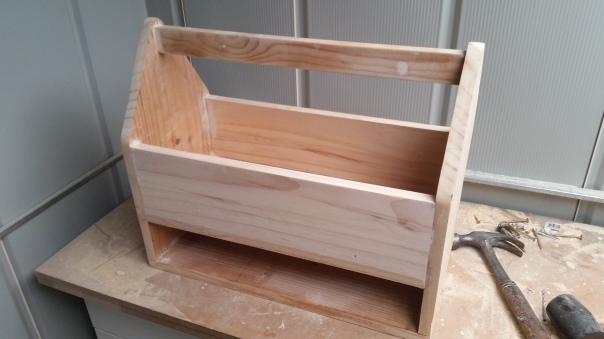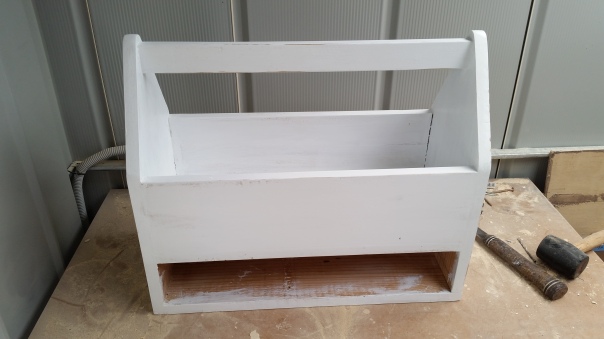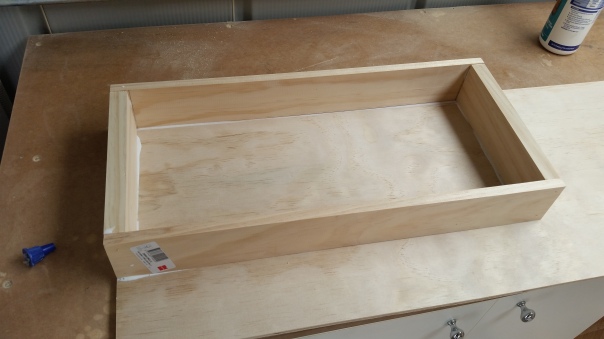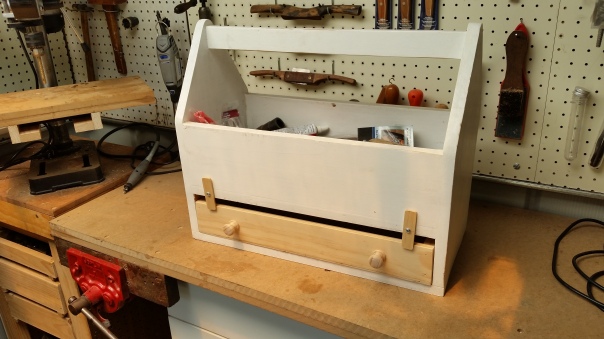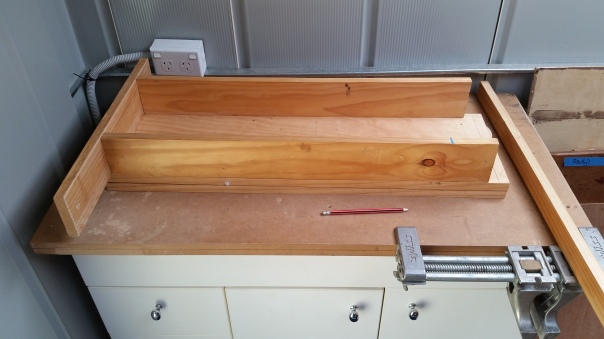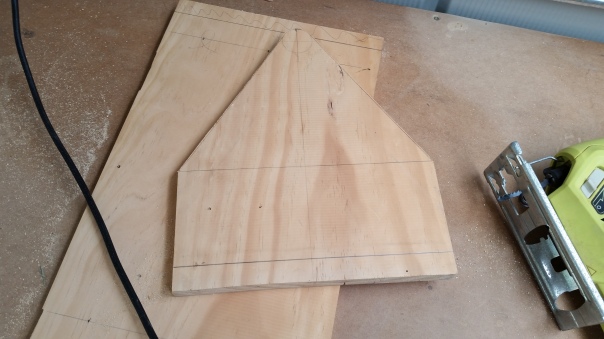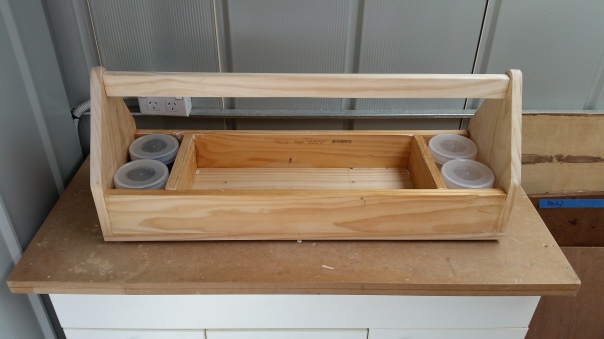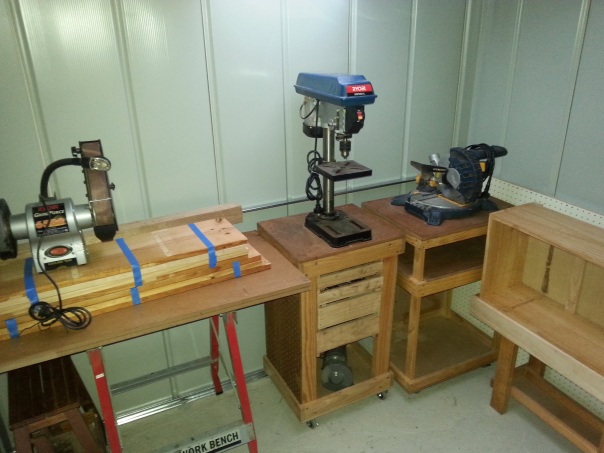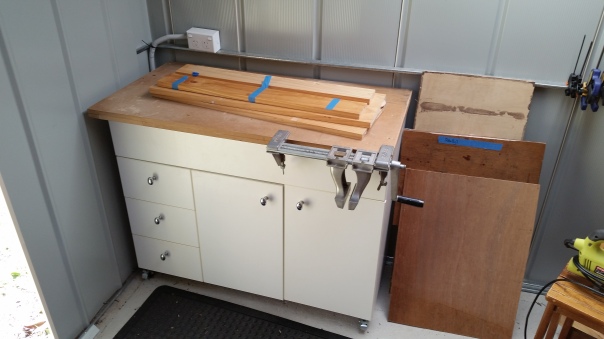A couple of weeks ago I received a Morakniv 106 straight knife and a 164 hook knife from my lovely wife as a Christmas present.
I wanted to wait a few weeks and give them a good workout before reviewing them, I’m not a fan of reviews that read “So I got this an hour ago and so far it’s not broken”. I wanted to see how they held up after they had been used, blunted, sharpened again, hung in the shed while it was raining etc.
Let’s have a look at the 106 first. I got it on the recommendation of noted carver Robin Wood (see this post).
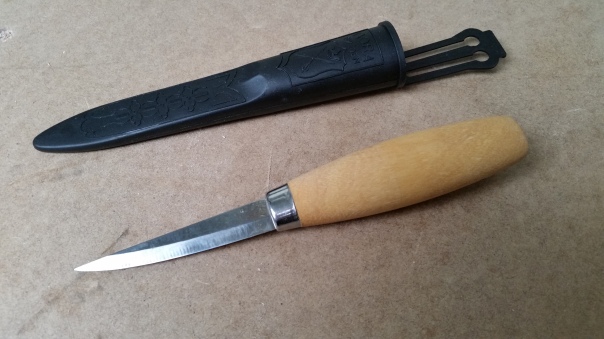
The picture above shows the knife and the plastic sheath it comes with. The blade is about 8cm long and it does have a few surface imperfections but they are behind the edge and don’t cause any problems. The handle is birch and while not sanded perfectly smooth it only took a few days for the oiled finish to start to feel good. The ferrule is fit well, and the overall quality for the price seems really good.
The first thing I noticed was how sharp it was. It was more than razor sharp, or maybe I just need to invest in better razors so I can do a proper comparison.
I’ve got a couple of Pfeil knives and out of the box they never left a polished finish on the wood like this one did. You can see in the below picture how cleanly it cuts. That’s Tasmanian Oak, which is pretty hard, yet it goes through it with about as much force as it takes to peel a carrot – which yes, I did try with this knife as well. Don’t tell my wife!
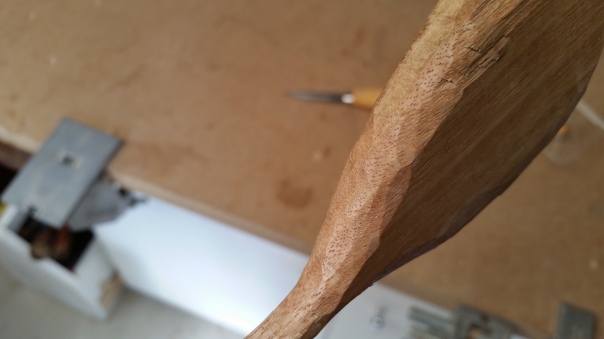
I decided that the real test was to see how it went on the toughest timber I could find, which was the end grain on some Australian Jarrah. It did take a bit more effort than the Tasmanian Oak did but still was far less work than any other knife I’ve used. You can see that it left a nice clean finish on the surface.
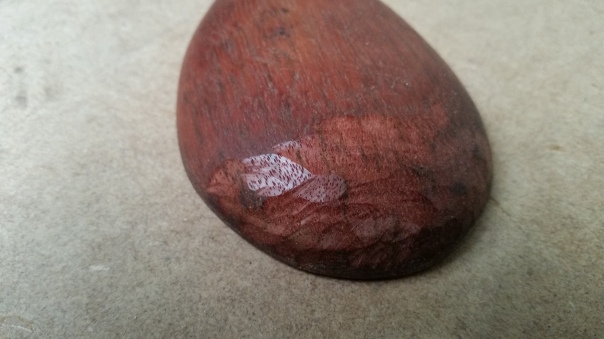
I’ve done 10 or 12 hours carving with it now, from a couple of spoons to a tiny fish to a new axe handle and it’s not needed anything more than a quick strop to maintain the edge. It’s actually getting sharper each time as I polish out the few grind marks that were on the edge. I’m really happy with it so far and understand why so many carvers recommend this knife.
It’s not going to take huge chucks of wood in one go, that’s what an axe or a drawknife are for, but it does handle pretty much everything I threw at it. I’d highly recommend it and hope to try the shorter 120 at some point.
Next up is the 164. It’s a hook knife designed to carve concave surfaces like the bowl of a spoon. It’s also really hard to photograph as it kept rolling back to this position on my bench.
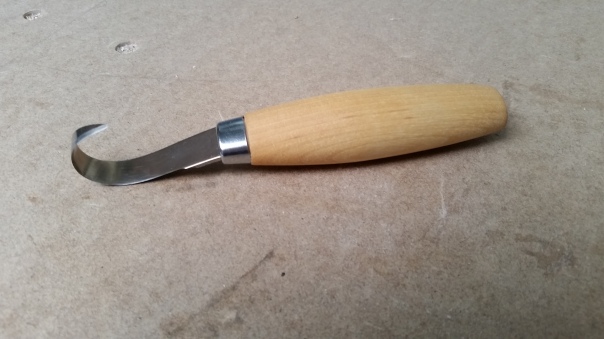
It’s got the same size and type of handle as the 106, and the same ferrule. On the one I received the ferrule isn’t seated quite right on one side. It’s not impacting it in use but it does show a lack of attention to quality control I didn’t see on the 106.
I wish that was the only problem I had to talk about. Every review I’d read of this knife said they came dangerously blunt and this one was no exception. Trying to take even a shallow cut required a lot of force and didn’t leave a good finish.
The blade is quite nice on it, but it’s a different grind to the 106, more like a chisel where there’s only a bevel on the outside. I set to work on it and it took a good hour to get it to the point where it started to cut cleanly.
It’s getting better each time I use it because I’m giving it a little more sharpening each time but it was pretty horrible out of the box. I knew it was going to be and understood that when I asked for it knowing that for the price I’d have to do some work on it, but I don’t know how they got the 106 so good and this so wrong at around the same price point.
I’m going to revisit this review in a few months and let you know what my thoughts are then. I need some more time with it but I can confirm that all the reviews that said they come blunt were right and if I hadn’t already had the equipment and skill to sharpen it I’m not sure it would have been usable.
There you have it, one brilliant knife and one I’m not sure about yet. Back to carving for me now!




